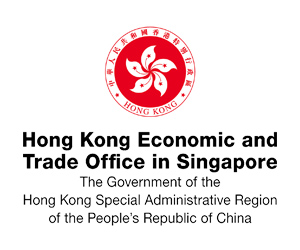Want to be in the loop?
subscribe to
our notification
Business News
BUSINESSES START TO FEEL IMPACT OF RED SEA SHIPPING CRISIS
The Red Sea shipping crisis may put a squeeze on Vietnam-based businesses as it lingers on with no foreseeable end in sight.
Tran Viet Huy, managing director of Tracimexco – Supply Chains and Agency Services JSC (TRA-SAS), told VIR that, "The Red Sea disruption is impacting ocean freight via the Red Sea and Suez canals. It is mainly hitting shipments from Asia to Europe and some US routes. The cost of ocean freight to EU ports from Asia has gone from less than $2,000 per 40-foot shipping container before December 2023 to over $5,000."
Almost shipping lines must turn it routes via the Cape of Good Hope instead of Suez Canal which increases expenses and transit time. The lack of empty containers has also been raised by shipping lines.
"However, the increasing freight costs seem unreasonable. They have been amplified by shipping lines to cover the cost of new vessels that are set to launch in 2024. Container warehouses are running under capacity. The extra cost incurred from shipping a container via the Cape of Good Hope is less than $300 versus the increase of $3,000 per 40-foot shipping container," Huy added.
Huy emphasised that some industries which have big volume of trade between the EU and Asia are feeling the impact such as textiles and garments, agriculture, and seafood.
Echoing this view, Jan Segers, general manager of Noatum Logistics Vietnam Co., Ltd, said, "In the short term, Red Sea shipping disruption is increasing the rates by adding a ‘war risk’ surcharge or by going via the Cape of Good Hope route which is longer and needs more fuel.”
He further noted that the Red Sea issue is being escalated might last for years. It will be difficult for buyers and sellers to adopt different strategies to deal with it. However, the challenge facing shipping lines needs collaboration at a government level.
According to Fitch Ratings, shipping costs have increased by more than 150 per cent since December 2023 as a result of disruptions to maritime traffic in the Red Sea. These increases are likely to be reflected in rising import prices in the coming months, and longer shipping times will reduce supplies of intermediate inputs and consumer goods. The outlook for shipping costs is uncertain, but a plausible scenario is that they will remain high for several quarters.
Economist Brian Lee Shun Rong at Maybank said, “The Red Sea ship disruptions are one risk worth watching, as any major and prolonged escalation may disrupt supply chains, inflate shipping costs and dampen trade. Indeed, rising tensions in the Red Sea have led to delivery delays and surging container freight costs, which may have disrupted shipments.”
He cited data by the General Statistics Office showing declines in production of phone components (down 15.3 per cent), televisions (down 11.3 per cent) and mobile phones (down 3.5 per cent). A slump in production volume runs contrary to rising phone exports, and may suggest that companies are cautious about the demand recovery and/or disruptions in the Red Sea.
Soủce: VIR
Related News

TRADE STRENGTHENED AFTER 5 YEARS IN CPTPP
After five years, the Comprehensive and Progressive Agreement for Trans-Pacific Partnership (CPTPP) has expanded Vietnam's trade with key markets, particularly in the Americas, including Canada, Mexico, Chile and Peru. It has promoted multilateral trade, driven institutional reforms, attracted foreign investment and strengthened Vietnam's international integration.

HIGH-QUALITY WORKFORCE EMBEDDED IN NINH THUAN'S RENEWABLE ENERGY DEVELOPMENT
To harness its vast renewable energy potential, which Statista estimates at 120.30 billion kWh with an annual growth rate of 3.39 per cent from 2024 to 2029, Ninh Thuan, the region with the most favourable natural conditions in Vietnam for such development, recognises that without a skilled workforce, natural advantages alone cannot drive the industry towards sustainable growth.

KOREA LEADS IN PROJECTS AND INVESTMENT IN VINH PHUC PROVINCE
Investment projects from Korean enterprises are primarily concentrated in key sectors such as electronic components manufacturing, automotive and auto parts, textiles, and electronics and semiconductor manufacturing. These industries align with Vinh Phuc province's priorities for attracting investment.

DEX CONNEX VIETNAM 2024: UNLOCK BUSINESS OPPORTUNITIES WITH MALAYSIA'S LEADING TECH COMPANIES
On behalf of Sunwah Group Vietnam and Sunwah Innovations, in collaboration with the Malaysia Digital Economy Corporation (MDEC), we are delighted to cordially invite you to participate in DEX Connex Vietnam 2024 on Thursday, 14 November 2024 in Ho Chi Minh City.

VIETNAM MAY BE ONE OF THE FASTEST-GROWING EMERGING MARKETS BY 2035
The S&P Global Look Forward Journal, titled "Emerging Markets: A Decisive Decade", which considers the opportunities and challenges the next decade will bring for emerging markets' economic growth in terms of energy transition, supply chain integration, and labour productivity.

VN SHOULD FOCUS ON DEEPER INTEGRATION INTO THE GLOBAL SUPPLY CHAIN NETWORK
As international businesses look to create new links in the global supply chain, Việt Nam, as well as the rest of the Southeast Asia region, can emerge as a major destination for foreign direct investment (FDI), said economists and policymakers.

































